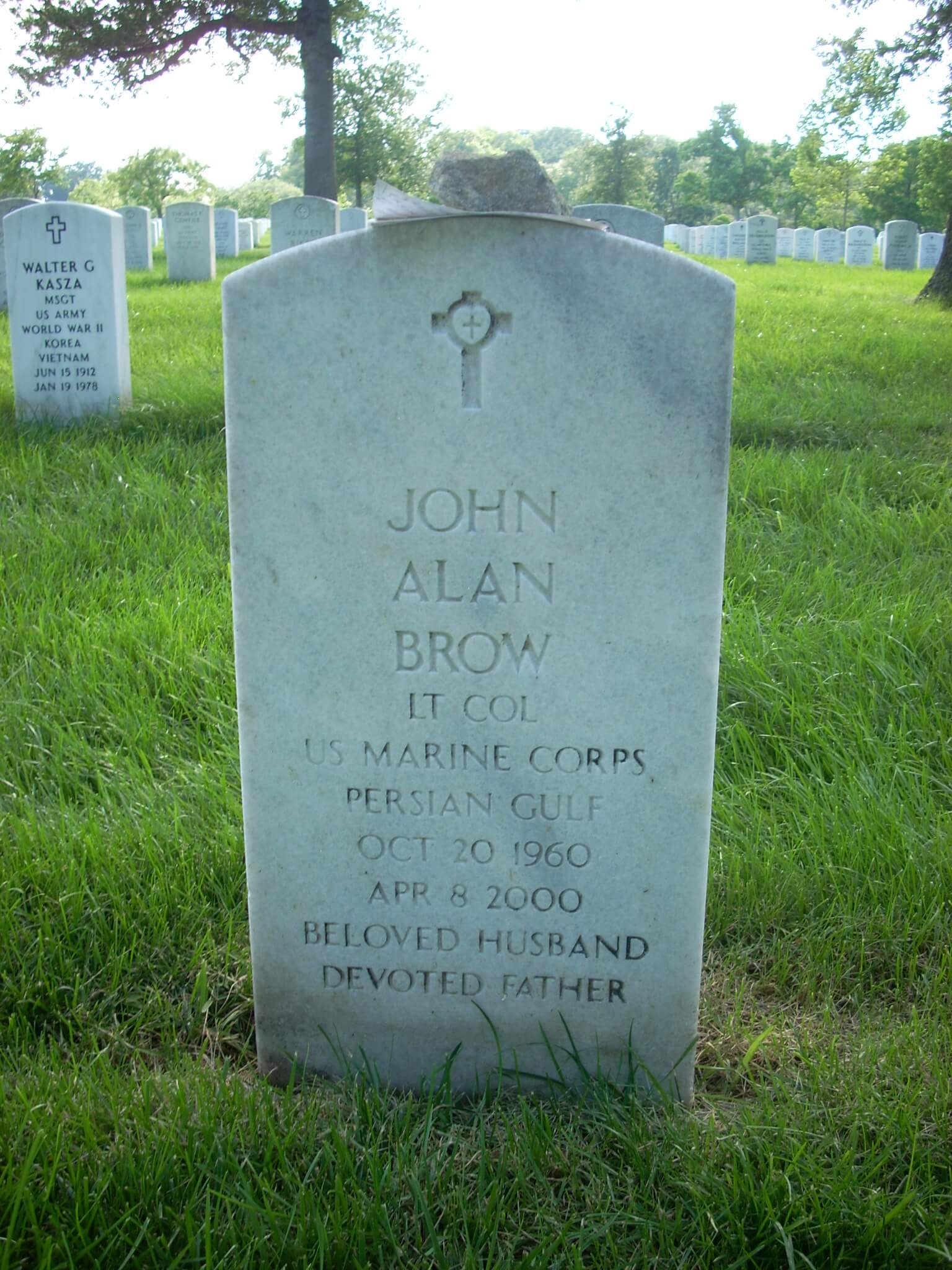Relatives of Dead Marines Seek Delay of Osprey Plans
By JAMES DAO
Published: Saturday, March 10, 2001
Courtesy of The New York Times
In emotional testimony, relatives of four marines who died in a V-22 Osprey crash last year told Pentagon investigators today that they believed the aircraft had been rushed into service before it was safe, and they urged the Marines to put the problem-plagued program on hold.
Their voices often cracking with emotion, the relatives, three wives and a sister, asserted that Osprey pilots had not been properly trained to fly the innovative aircraft and that its manufacturers, Boeing and Textron Inc.’s Bell Helicopter unit, may have withheld vital information from the Marine Corps about potential aerodynamic problems.
”I feel the program was pushed too hard and too fast,” said Trisha Brow, the wife of Major John A. Brow, the pilot of an Osprey that crashed in Arizona last April 8, killing all 19 marines on board. ”There is so much political pressure to do this program, it is like a runaway train.”
When she began her remarks, Mrs. Brow held up a color photograph taken in 1999 of 11 Osprey pilots standing in front of one of the ungainly looking aircraft, which can take off, land and hover like a helicopter and cruise like an airplane. Four of those pilots died in two crashes last year, along with 19 other marines.
The testimony came in the first public hearing by a four-member panel that is conducting a sweeping review of the Osprey’s cost, safety and effectiveness. The panel is expected to complete its work next month and send a report to Secretary of Defense Donald H. Rumsfeld that will help determine the future of the $40 billion program.
The inspector general for the Department of Defense is conducting a separate investigation into accusations that high-ranking Marine Corps officers pressured marines at the Osprey’s base at New River Air Station in North Carolina into falsifying maintenance records.
The Marine Corps wants to buy 360 of the aircraft to replace Vietnam-era helicopters. The Marines have grounded their eight remaining Osprey until the investigations are finished.
The women, who were accompanied today by lawyers, did not claim to have anything other than public reports and their own instincts to back up their assertions about the manufacturers, whom they are planning to sue. The father of Lance Corporal Jason T. Duke, a marine who died in the crash last April, filed a negligence lawsuit in Arizona today against the manufacturers.
Spokesmen for Bell and Boeing said they had not seen the lawsuit, and they declined to comment on today’s testimony.
The widows of two Osprey pilots also said today they were outraged that the Marine Corps had attributed the April crash to ”human errors” by the pilots, and they urged the panel to clear their husbands of any responsibility for the crash.
”To accuse my husband of not only causing his own death but contributing to the death of 18 others is something the Gruber family cannot live with and should not have to,” said Dr. Connie Gruber, the wife of Major Brooks S. Gruber, the co-pilot in the Arizona crash. ”I cannot begin to express to you how this wrongful accusation compounds our pain.”
Military investigators attributed the April crash to a relatively rare aerodynamic condition known as vortex ring state, which occurs when a rotor-blade aircraft descends too rapidly while moving forward at slow speed. It can cause such aircraft to lose lift suddenly; and in the case of the Arizona crash, it caused the Osprey to flip over and plummet to the ground, where it crashed in a fireball, investigators said.
The Marines Corps blamed the crash on ”human factors,” concluding that the pilots apparently caused the Osprey to enter into vortex ring state by trying to land it too quickly at too steep an angle.
Lawyers for the widows said that the manufacturers and the Marine Corps had failed to adequately test the unusual and potentially deadly effects of vortex ring state on the Osprey, which, unlike a helicopter, has rotors mounted on wings. That configuration caused the Osprey to flip over when it entered vortex ring state, experts have said.
The lawyers, citing Pentagon reports, also said that the flight simulators used to train Osprey pilots were not programmed to simulate vortex ring state. And the flight manual contained virtually no information to help pilots recognize the start of the condition or how to escape it, they said.
”Pilot error? Human factors? Hogwash,” said Brian J. Alexander, one of the lawyers.
The panel also heard from military analysts and a professor of aerodynamics who argued that the aircraft would be extremely valuable for military and commercial purposes because of its speed, power and range.
”Don’t abandon a concept that is the most revolutionary thing that has come out of aerospace on the aeronautics side in the last probably 40 or 50 years,” said Dr. Daniel P. Schrage, director of the Center of Excellence in Rotorcraft Technology at the Georgia Institute of Technology.
The Washington Post – Washington, D.C.
Author: Thomas E. Ricks
Date: May 8, 2000
The V-22 Osprey crash that killed 19 Marines last month occurred when unexpected turbulence caused the rotor on one side of the novel aircraft to lose lift, which tilted the plane dangerously to the right and quickly threw it into a fatal descent, Pentagon officials now believe.
There is no indication of recklessness by the pilot, Marine Major John A. Brow, who died in the April 8 crash at a civilian airstrip in Marana, Ariz., about 15 miles northwest of Tucson, a Pentagon official familiar with the inquiry said. Rather, by tentatively attributing the accident to ” ‘human factors,’ ” he said, “we mean he was getting into flight parameters he hadn’t been in before.”
The accident occurred in the last moments of the V-22’s flight across Arizona from the Marine Corps base at Yuma, at the western edge of the state, as part of a Marine test that involved two V-22s flying in close formation. The V-22 had changed from airplane to helicopter mode, which it does by tilting its rotors back so they point upward. It was trailing the other V-22 by about 200 feet and was descending rapidly, at a rate of about 1,700 feet a minute, the official said.
Investigators Foresee No Change in Osprey
Published: Tuesday, May 9, 2000
Marine Corps investigators looking into the fatal crash last month of a V-22 Osprey do not believe that they will find a need to redesign the aircraft, a hybrid of airplane and helicopter, officials said today.
The investigators are close to ruling out mechanical failure as the cause of the accident, which killed 19 marines, and have found no indication of recklessness by the pilot, Major John A. Brow, 39, of California.
Marine Corps officials said that while the investigation was not yet complete, the helicopter most likely lost aerodynamic lift in a phenomenon known as ”settling with power.”
Settling with power, also known as vortex ring state, occurs when a helicopter settles into the wash produced by its own rotor system. In a rapid, nearly vertical descent, the upward flow of air at the inner portion of the rotor blades can exceed the downward flow produced by blade rotation. At this point the aircraft can sink uncontrollably.
In the case of the Osprey, the rotors may have been using such a large proportion of engine power that the aircraft had insufficient power left to slow the rate at which it was sinking in its rotor wash.
BROW, JOHN ALAN
LT COL US MARINE CORPS
PERSIAN GULF
- DATE OF BIRTH: 10/20/1960
- DATE OF DEATH: 04/08/2000
- BURIED AT: SECTION 66 SITE 336
ARLINGTON NATIONAL CEMETERY
Michael Robert Patterson was born in Arlington and is the son of a former officer of the US Army. So it was no wonder that sooner or later his interests drew him to American history and especially to American military history. Many of his articles can be found on renowned portals like the New York Times, Washingtonpost or Wikipedia.
Reviewed by: Michael Howard


